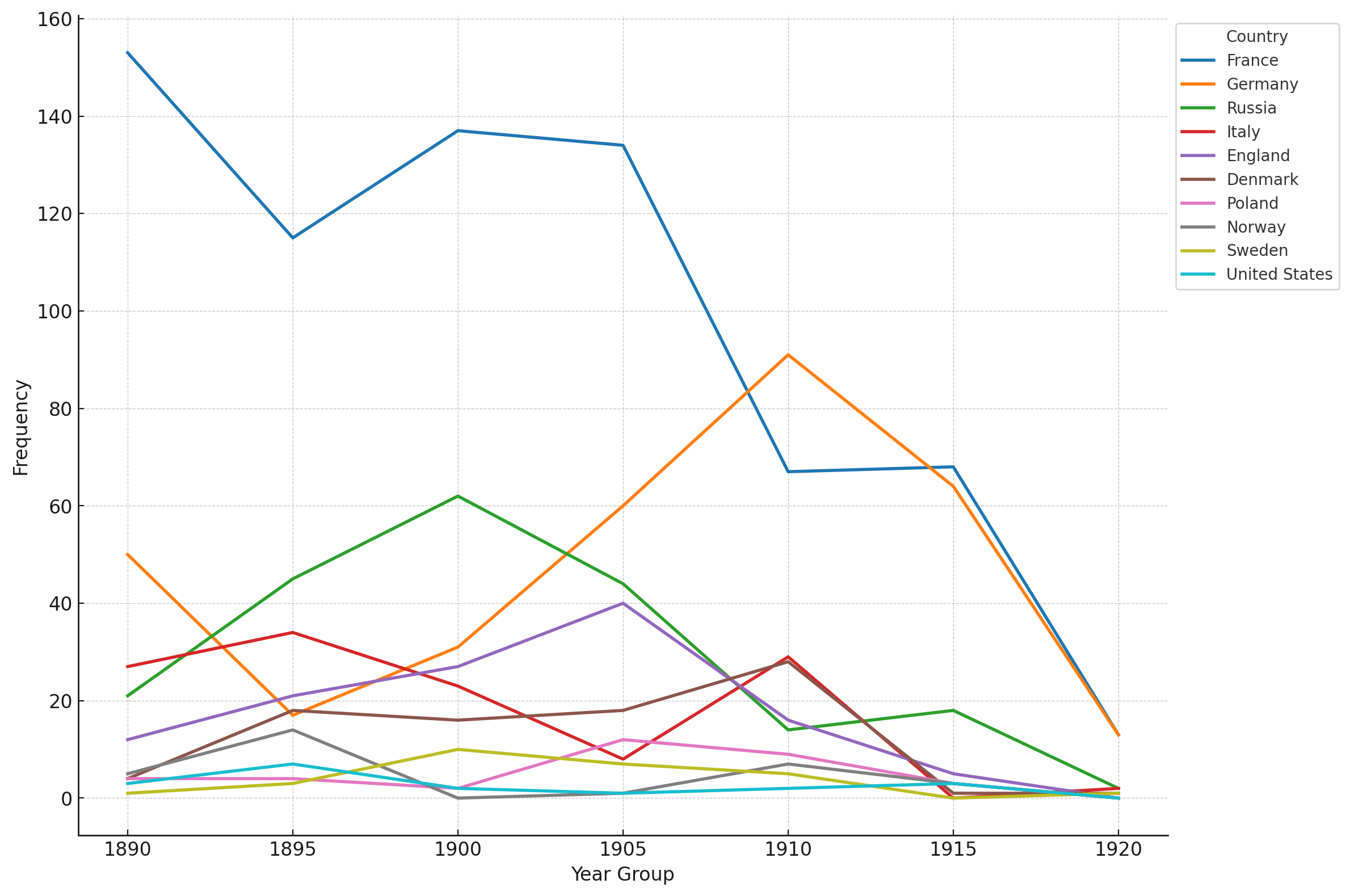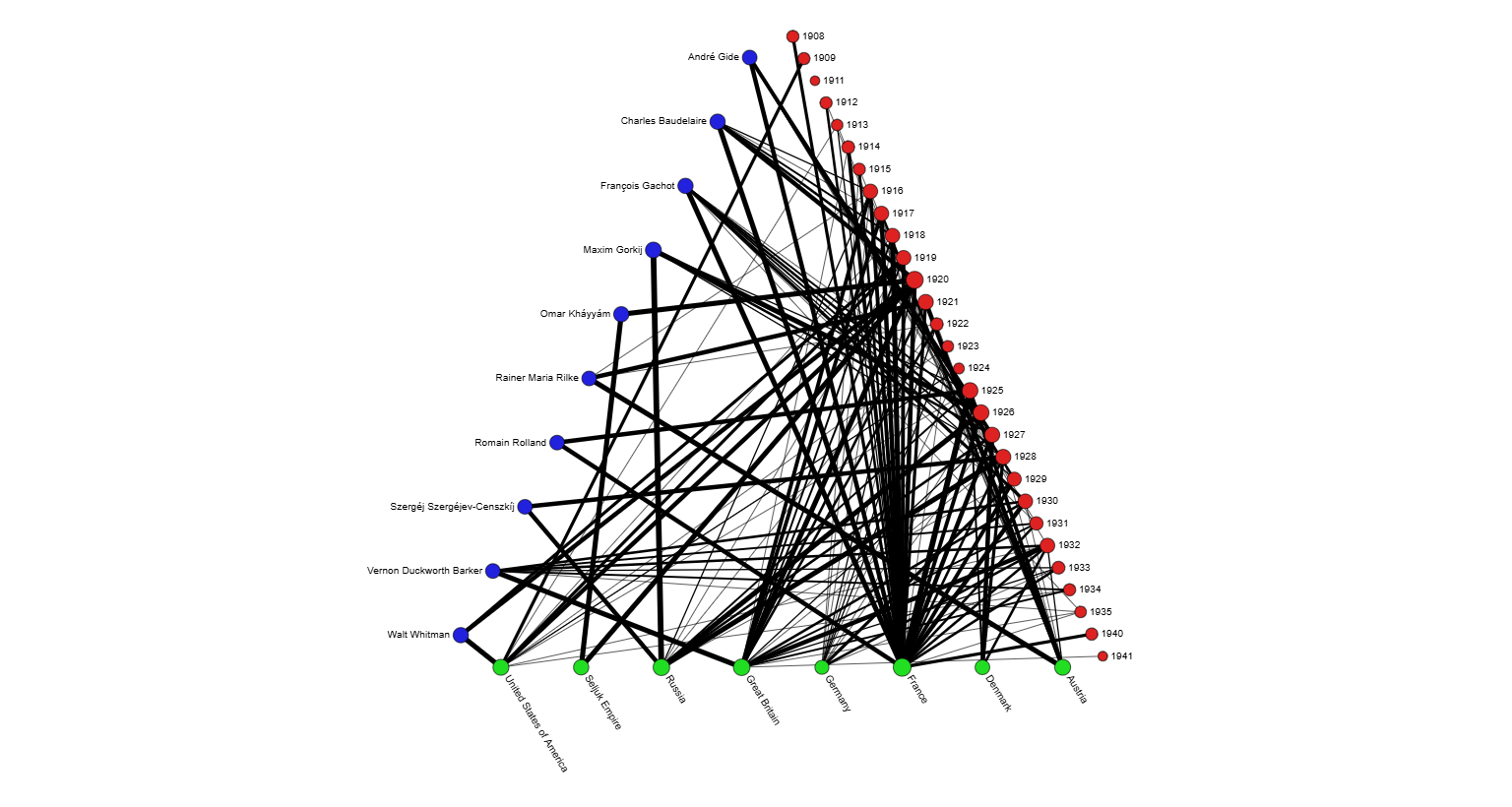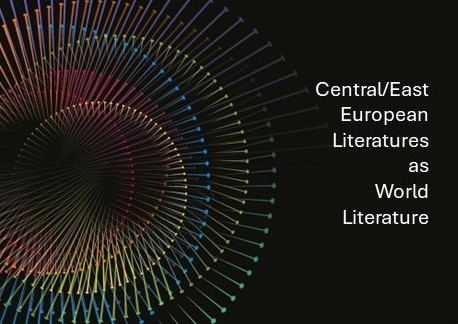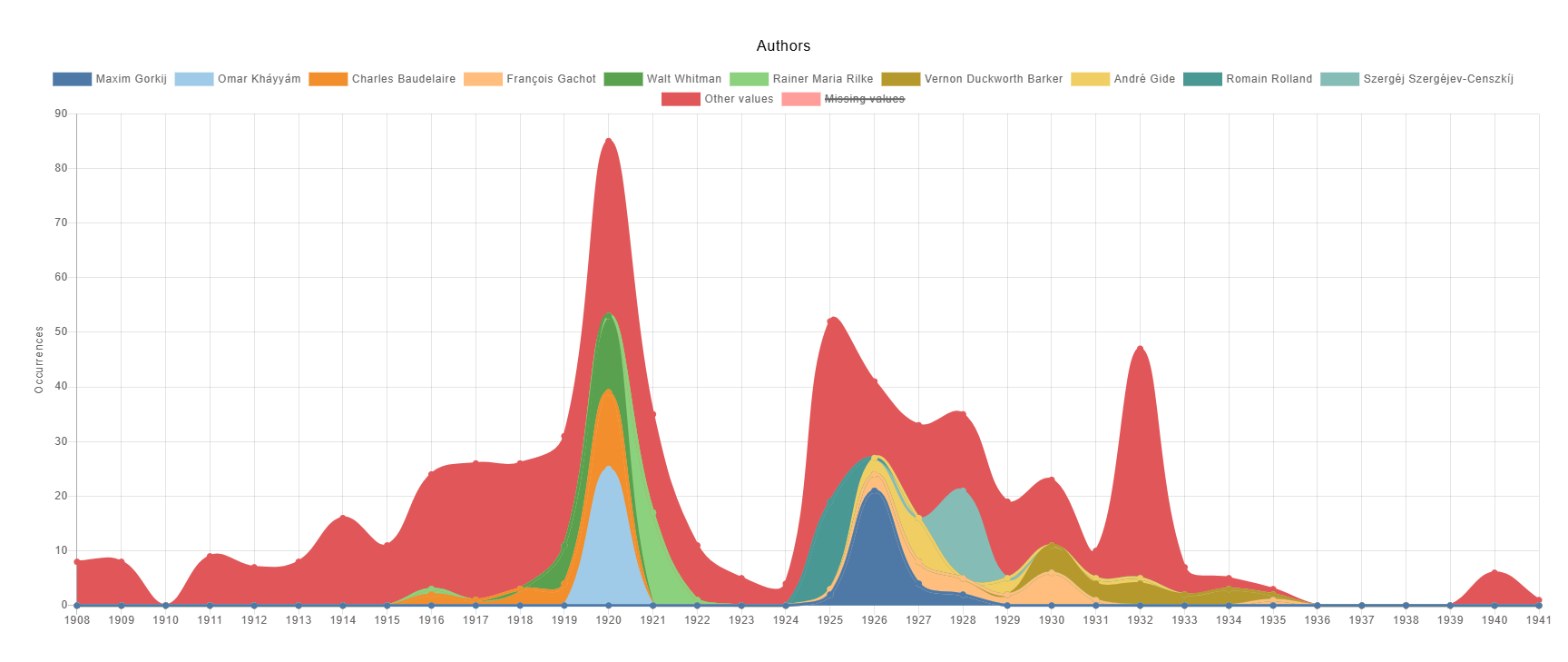Jessie Labov, Róbert Péter, Szilvia Maróthy, and Zolátn Kocsis
Overview
The supplementary material below is meant to accompany the chapter "Looking for the World in Hungarian Literature: Foreign Authors in Early Twentieth-Century periodicals" from the Bloomsbury volume Hungarian Literature as World Literature, edited by Péter Hajdu and Zoltán Z. Varga (forthcoming 2026). The chapter was co-authored by Jessie Labov, Róbert Péter, Szilvia Maróthy, and Zoltán Kocsis, and offers a comparison of the distribution of foreign authors in two early twentieth-century periodicals, A Hét: Társadalmi, irodalmi és művészeti közlöny („The Week: Social, literary, and artistic journal”, 1890-1924), and Nyugat („West”, 1908-1941). Due to the physical limitations of the print volume, some of the color visualizations and associated metadata could not be shared within the printed chapter, so this page offers the audience for the project greater access to our datasets and analysis.
Links to Raw Data
The metadata for A Hét was generated from a 1954 Repertorium compiled by Ferenc Galambos (A Hét Irói és Irásai), transformed into structured data, and then georeferenced by Mihály Benda, Jessie Labov, and Szilvia Maróthy in 2022. The resulting dataset follows the logic of the original repertorium, indexing each article written by a foreign author relative to the year, issue, and page number in the journal, but also includes country of origin of each author.
Raw data for foreign authors in A Hét (via github)
Raw data for foreign authors in A Hét (via zenodo)
For Nyugat, Róbert Péter and Zoltán Kocsis identified the country affiliations of the (translated) authors by disambiguating and reconciling the authors to knowledge bases such as Wikidata. This task was complicated by the fact that the borders and names of countries changed over time. Besides the records in authority files, we also considered in what language a given author produced his writings. For example, the primary country affiliation of authors, who wrote their literary works in Hungarian but were born or lived in surrounding countries that did not belong to Hungary at that time of their writings, was regarded Hungarian. For the sake of the visualizations, we had to make some simplifications: for instance, the country names such as Kingdom of France and France were united. Although the enriched Nyugat database contains more than one country affiliation of several authors living in different countries throughout their lives, we only visualized the primary countries. The visualizations were made by the AVOBMAT software.
Raw data for translated authors in Nyugat (via google drive)
Supplementary Visualizations
We include here several diagrams and charts in color that further enhance our analysis of foreign authors in A Hét and Nyugat which could not be included in the printed version of the chapter, which could only appear in black and white.
Figure 2. Chronological view of texts over 5-year increments by language of A Hét (Benda, Labov, and Maróthy)

Figure 3. Country trends in Nyugat: top 10 countries of foreign authors (normalised view, generated by AVOBMAT) (Péter and Kocsis)

Figure 4. Relative frequencies of specific authors in Nyugat (generated by AVOBMAT) (Péter and Kocsis)

Figure 5. Distribution of the (translated) publications of foreign authors in Nyugat (aggregated view, generated by AVOBMAT) (Péter and Kocsis)
Figure 6. Network of 10 top authors, 8 top countries of authors and publication years in Nyugat (generated by AVOBMAT) (Péter and Kocsis)


